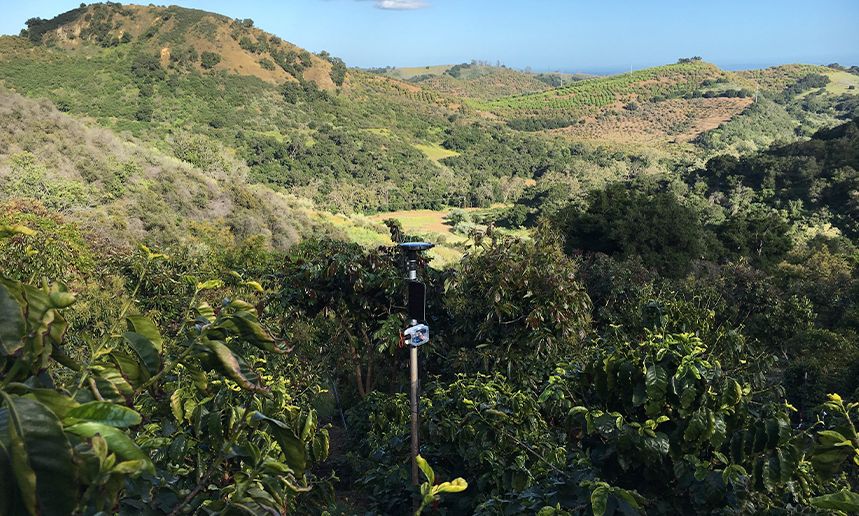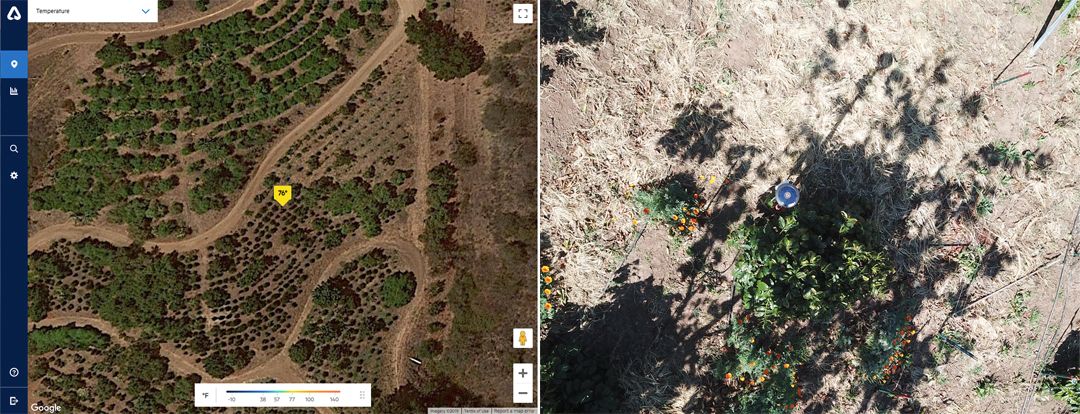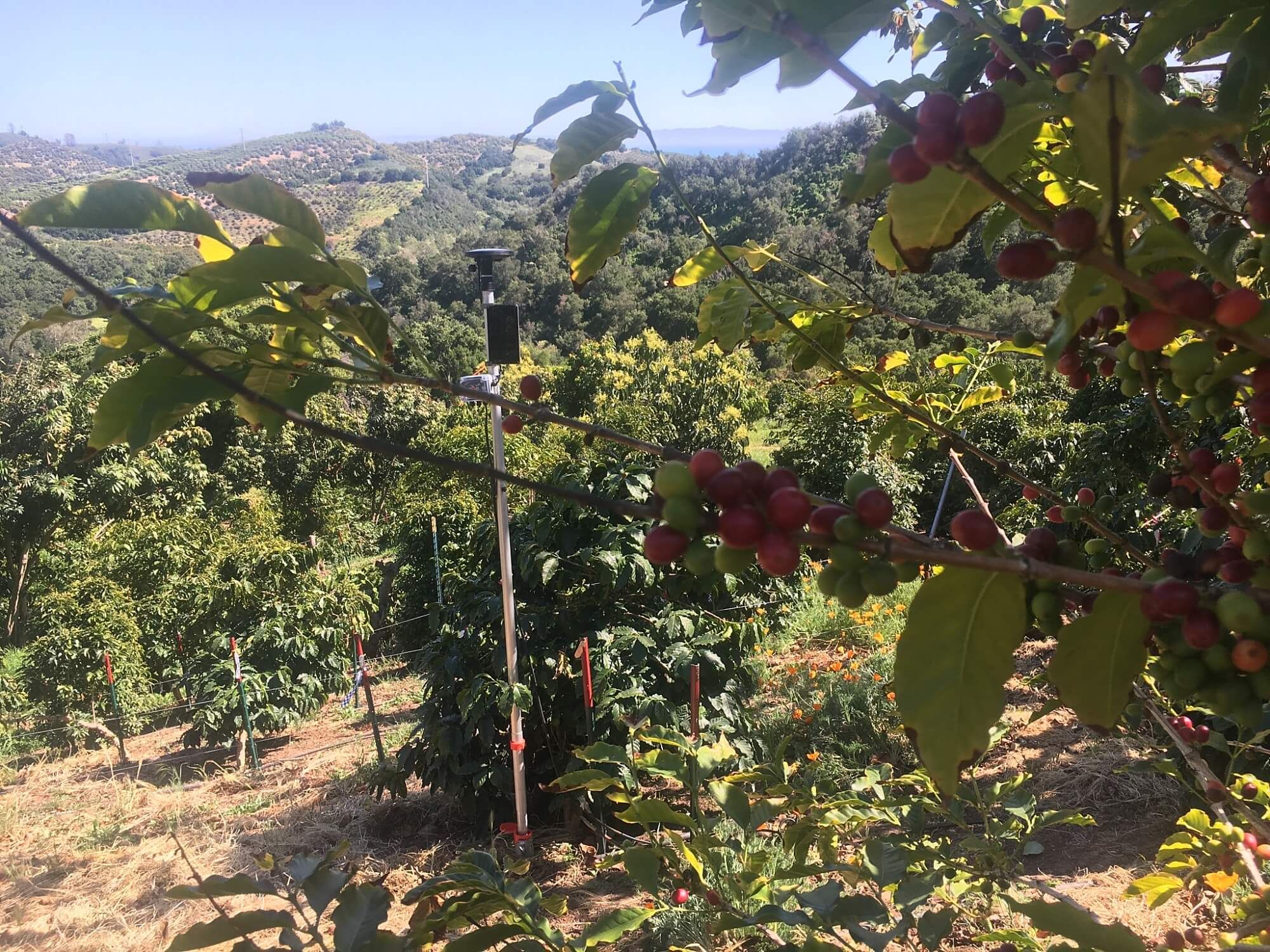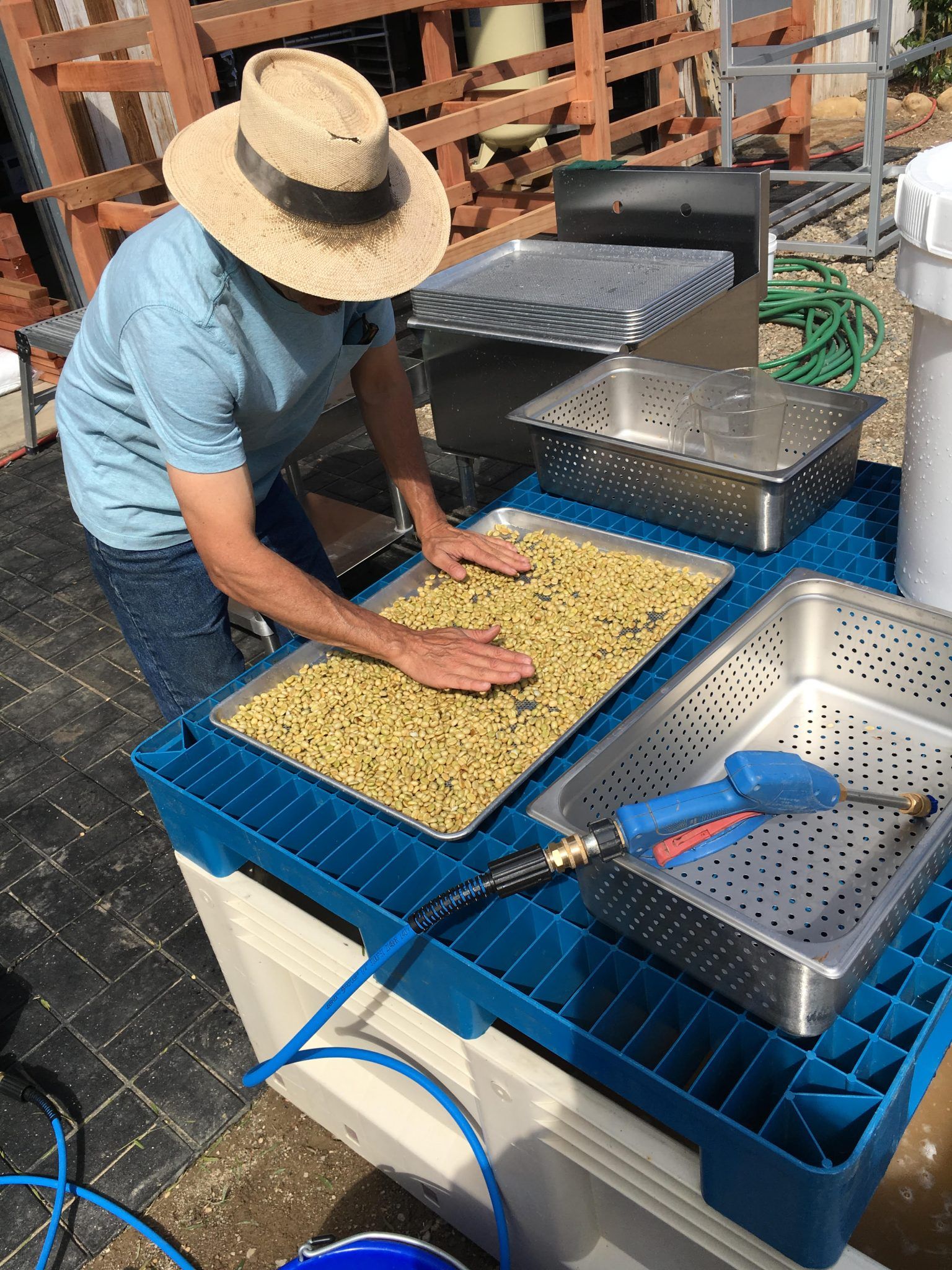California Coffee & the Data Behind the Beans
The Arable Mark at Good Land Organics coffee farm, in Goleta, CA.
Organic coffee grown in California: a total pipe dream, right? Not anymore. Frinj Coffee, Inc. is a cutting-edge operation working to establish the crop in a new location, supporting an innovative network of coffee growers concerned with high quality and thoughtful farming. Good Land Organics is the flagship farm in the Frinj family, and also serves as Frinj’s primary post-harvest processing facility and main educational site, in Goleta, CA.
Frinj’s coffee trees are planted throughout Southern California across several more familiar California crops, including avocados, citrus, and wine grapes. They are partnering with researchers to develop their own breeds suited to the particulars of the California climate and soil, and use the Arable Mark device and analytics platform to collect data and observe what is working — and not working — with their growing practices. As the foundation of a young industry with an eye towards scaling out across the state, having precise climate, plant, and soil data is critical to their success. Here, Arable’s Levon Minassian chats with Frinj’s Kaytlin O’Dell, Field Manager, and Greg Kitajima, Irrigation Specialist, to learn more about this exciting endeavor during a recent trip to Goleta.
Arable Labs (AL): Let’s start with a little background on your operation.
Frinj Coffee (FC): Jay [Ruskey, CEO & Founder for Frinj] started Good Land Organics in 1992, and has been working with coffee for over 17 years. He had a vision, and now Frinj has a network of 47 growers, each part of an organic-oriented, thoughtful movement where the coffee really speaks for itself. Even today, people think it’s impossible to grow coffee in California; there is a misconception that coffee growing is altitude-dependent, but really it’s the temperature range that matters most. Not too long ago people didn’t grow blueberries here; the idea was that there were not enough chill hours, or that the soil pH is too high. Now we are in the top ten blueberry-producing states, and that happened in only the last couple decades*. We’re going to see a similar trend in coffee.
AL: What led you to Arable?
FC: After one of the worst growing seasons ever — a hard frost in late 2017, followed by the Thomas fire and the mud slides, then a heat wave just before the coldest winter on record — Mother Nature’s gift of rain this season has been a blessing for coffee and avocados. We know it’s not going to last, so in this time of abundance, it’s a good time for us to focus on the technologies that can help us to best grow our coffee. It’s exciting to work with Arable because we can get a very detailed explanation of how much water we are using at each of our sites. Also, the ease of install and implementation — we manage a lot of folks here, and need tools we’re able to read and use easily. Good customer support makes the transition to new technology so much more pleasant.
Aerial view of the farm in the Arable app, and a close-up of the Mark in the field.
AL: Tell us a bit about how agtech helps you with your decision-making.
FC: Frinj Coffee offers a full-service growing experience, more like a partnership with our growers, and the first question we need to answer is: Exactly how much water does coffee require to grow? We need to know how often to irrigate, and how much. If we can look back on the data and see if things went well, or if we overshot, next time we can dial it in more, or dial it back, so that we don’t sacrifice our yield or waste money by watering incorrectly. Coffee plants can have three different growth stages on the same plant; you have green beans and ripe cherries along with vegetative flush. The weather and climate data we collect help us understand what outcomes might be related to climate factors, or what could be restricted by moisture or water. We need to know what’s happening today and tomorrow in the field. At Good Land Organics, we are implementing this system to collect this important data so that we can apply it to the knowledge we share through Frinj to our partnering growers.
Frinj also has a partnership with professors at UC Davis; we are partly a biotech company, and we’re working with researchers to develop plant varieties that are better suited to California farmers. California is an old soul; we have a Mediterranean climate that even Mediterranean people would be jealous of. Our growing climate is an advantage; in more tropical areas, flowering is 6–9 months, vs. our 12-month period here. This allows for a longer maturation period to develop more complex flavors and sugars. In a blind taste test by certified tasters, we got a cupping score of 92; some of our coffee sells for $304/pound. This price is largely because of the quality brought on by the California climate. And technology brings us leaps and bounds ahead, building on our solid foundation to fine-tune the quality even further.
Coffee cherries in the foreground.
AL: There must be a number of challenges while establishing a new crop in an unconventional place. How does having reliable data help you realize your vision?
FC: There are a couple of reasons growers are asking for more data. First, they’re all passionate about coffee. Growing coffee is risky; it’s a new crop to California, and we are taking on the responsibility of finding the best technologies to help our growers. We want to help them grow more by running experiments and collecting data. If you aren’t doing that, your farm will die — it’s the nature of farming today. Also, California has incentives by county to invest in technologies in the form of rebates to pay for sensors. The whole state is interested in you farming the right way. There is no excuse now, because the tech is so available, it’s becoming more and more affordable, and we need to conserve our water and natural resources. We’re in uncharted territory, and accurate data will help us develop the industry more smoothly.
AL: How do data & technology impact the bottom line of your business?
FC: Labor is expensive, especially for us since our coffee is hand-harvested, requiring lots of dexterity and skill. The cost of farming has gone up; we need to buckle down the science of farming to make it profitable. Technologies are fast becoming easy to use. You can forecast your labor needs, or know when and how much water to put on. Technology helps us increase efficiency; I can’t be babysitting units out in the field, I need them to be live and connected so I can focus on other things. But it’s not just about efficiency, it’s also about elevating quality, and getting the best value for what we put into it. It all comes back to quality.
Processing the beans on site.
AL: What other technologies are you using?
FC: At our Frinj processing mill, we have a sorting machine; a single green bean can ruin the taste of an entire bag, and this helps us avoid that. We also use a Bext360 prototype, which is a blockchain SaaS for supply chain transparency and accountability.
AL: Where do you see California Agriculture going in the future?
FC: Agriculture can’t stagnate. We need to feed billions of people. Big ag businesses are successful now, but we also need room for small, boutique farms. Regulations and trends like urban intrusion make it really hard for small farmer operators who may have 100 acres or less. If it’s too hard, they’re just going to sell their land: the best thing that grows on ag land is new houses. Instead, we need to make a competitive environment for farmers so they can compete and not be pushed out.
Photos by Levon Minassian, Customer Success Sage at Arable Labs.



